

![]() Using
the film Blade Runner
for GCSE English.
Using
the film Blade Runner
for GCSE English.
Metropolis
(Fritz Lang 1927) contrasts the idle rich with the multitudes of slave workers
needed to support their capitalist lifestyle. 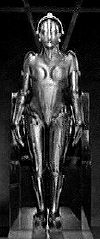
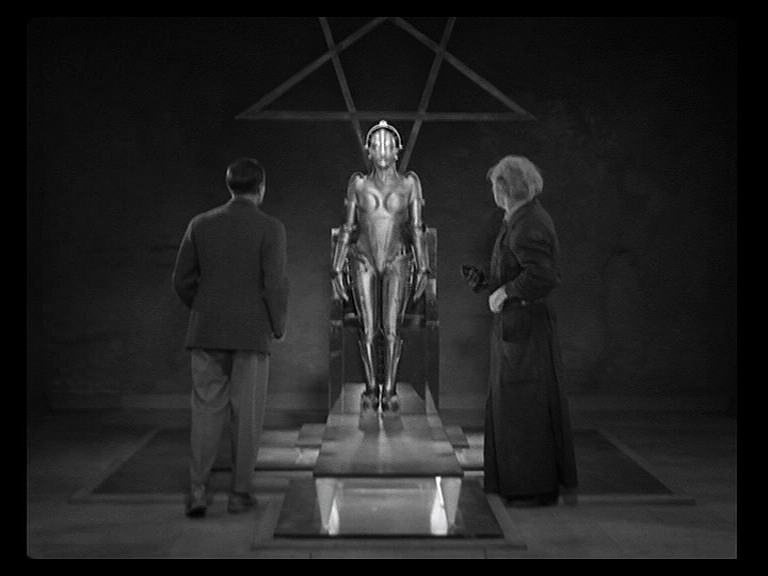 The
significant connections between Blade Runner and Metropolis include both being
set in futuristic dystopias and the significance of robots.
The
significant connections between Blade Runner and Metropolis include both being
set in futuristic dystopias and the significance of robots. ![]()
The "Maschinenmensch" or mechanical robot is transformed into a humanoid in the course of the film and, though appearing similar to the heroine, Maria, embodies sin and foments unrest in the guise of an exotic dancer.
In this way we can see she is both robot and has human characteristics. Compare this with any of the replicants in Blade Runner - and, arguably Deckard too, if we follow the logic that he also is a replicant.
Her creator, Rotwang, has as strong a belief in her as Tyrell in Blade Runner. Both Tyrell and Rotwang meet violent deaths in return for dabbling with creation.
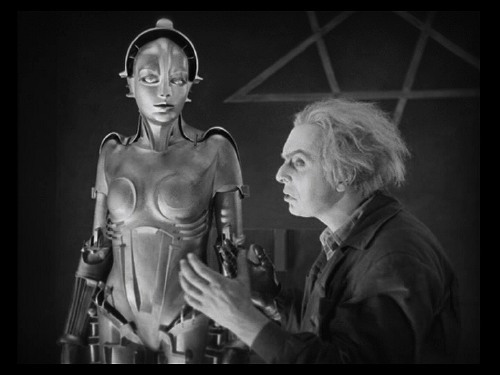
Both the mechanical robot Maria and the replicants also meet violent deaths. Maria and Freder re-establish the right order of things while Deckard and Rachael head off into their own private future.
The 21st century dystopias of the films show the consequences of forgetting our essential selves and relying on slaves and industry or technology to create a new world for us. In Blade Runner all who can have deserted the planet for a better life elsewhere; in Metropolis the select rich play while ignoring the multitudes of poor slave workers and their children who are hidden from them.
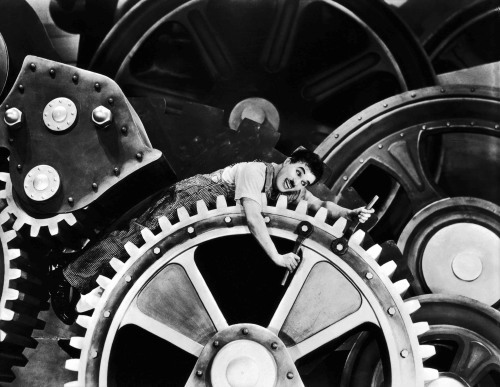 The
key role of Maria, through her beauty bringing awareness to Freder, finds
an echo in Rachael and her influence on Deckard.
The
key role of Maria, through her beauty bringing awareness to Freder, finds
an echo in Rachael and her influence on Deckard.
They act as influences creating Mediators to bring awareness and re-establish the correct order of things.
The Metropolis dystopia may not have been new to 1920's film audiences who had already seen the American theme of ruthless capitalism versus workers in D W Griffith's Intolerance (1916) but Verne, Wells and Dickens had already described the evils of industrialisation as did many social reformers.
Chaplin's Modern Times in 1936 also plays with the imagery of man as a helpless cog in a massive machine as, later, Orwell in 1984 would personify the influence of capitalism into Big Brother.
It becomes a recurrent theme of late 19th century and 20th century literature - and life - for a natural world to be threatened by the forces of industrialisation in the search for power or profit.
Read more about the film at the Internet Movie Database and at Wikipedia.
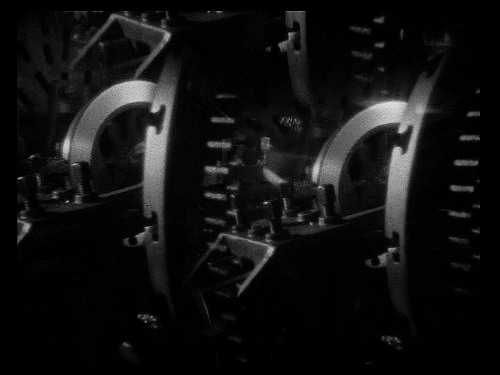 |
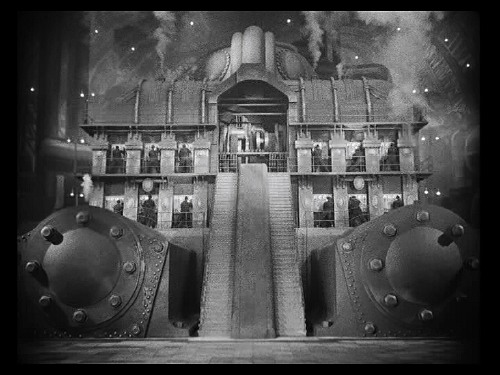 |
Metropolis opens with images of cogs of massive machines |
The
huge M-machine needs constant vigilance from the exhausted workers |
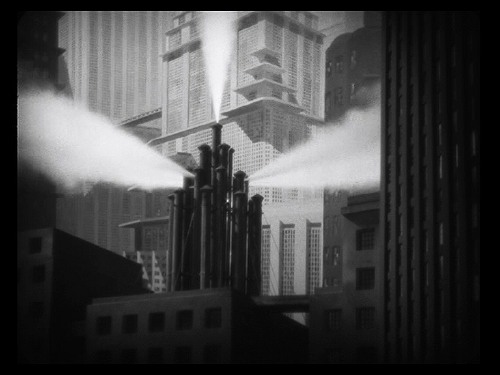 |
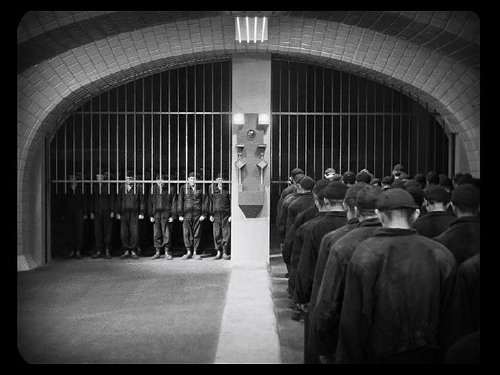 |
A
steam whistle blows to signal the end of a long shift |
In
one lane dull and docile workers queue silently to enter the M-machine
hall while in the other workers concluding their shift queue to leave |